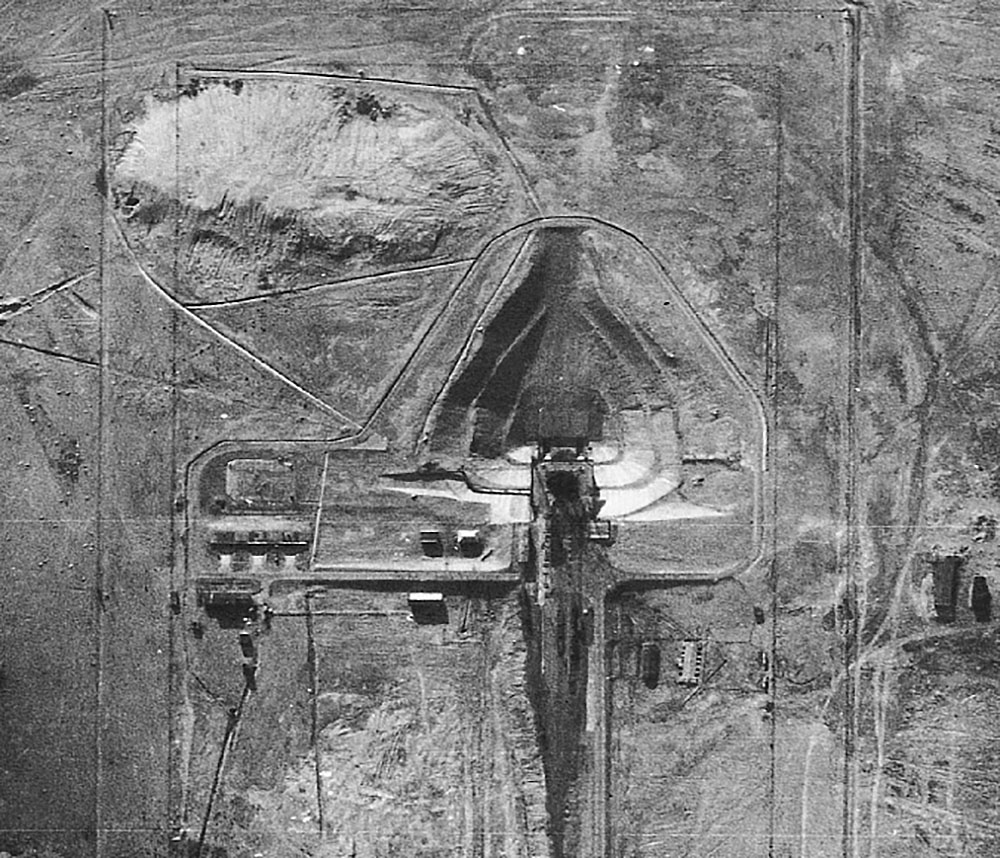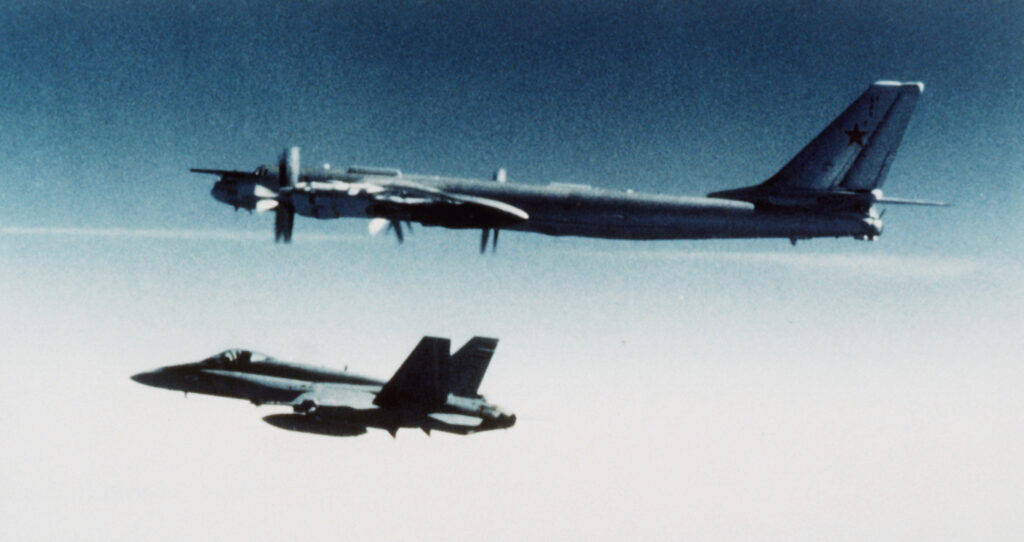Editor’s note: This article was originally published in the newsletter of the Ottawa chapter of the Canadian Aviation Historical Society (CAHS).
In the early fifties, there was a belief amongst intelligence communities that the Soviet Union was producing large numbers of attack aircraft, far outstripping western production. Known as the “bomber gap” this lead to an acceleration of the interceptor development program, the Avro Arrow, in Canada. The program went from developing an initial two pre-production aircraft for test purposes, to eight.
By 1957, the “bomber gap” had given way to the “missile gap”. It was being argued amongst intelligence agencies in the US, Canada, and Britain that the Soviets were now scaling back their bomber production, in favour of the intercontinental ballistic missile, or ICBM. The launch of the Sputnik satellite by the Soviets gave credence to this. The impact to Canada, according to archival records, was the cancelation of the Arrow program on February 20, 1959, resulting in the loss of employment for some 14,000 employees at what had become the third largest company in Canada at that time, A.V. Roe Canada Limited. The company itself ceased to exist by 1962.

In a secret Cabinet discussion of February 1960, the then Prime Minister of Canada, John Diefenbaker, reflected on the decision to cancel the Arrow in the face of information that attack bombers were not in fact being scaled back by the Soviets. Interceptor aircraft were indeed required and there was now a proposal from the United States to sell Canada their aircraft for this role. Specifically, the record of that meeting states in part:
“The Prime Minister said that a committee of the Ministers who were members of the Cabinet Defence Committee plus Messrs. Churchill, Harkness, Nowlan and Maclean should meet to consider the proposal [to purchase US aircraft] and make recommendations. If the Committee reported that security demanded the acquisition of these aircraft [the F101 from the US], then that would have to be the decision. To purchase them, however, would cause great difficulties. It would place him and the Minister of National Defence in impossible positions. On the other hand, failure to re-equip would be bad for the morale of the R.C.A.F. He thought the public had been convinced of the wisdom of the government’s decision to cancel the Arrow. To obtain other aircraft now in the face of statements that the threat of the manned bomber was diminishing and that the day of the interceptor would soon be over would be most embarrassing unless a reasonable explanation could be given. Additional Bomarcs in Canada might be an alternative. The committee should first examine carefully what had been said publicly by himself and other Ministers about cancelling the Arrow and, in the light of that, consider what was possible. In any event, the safety of the nation should be the paramount consideration no matter what the consequences. He had been against cancelling the Arrow but had been persuaded otherwise.“ (bolding mine)1
The question then is how did the notion of the “missile gap” originate in the first place if after the Arrow’s cancelation, interceptors were again required?
The answer is contained in released files from the Central Intelligence Agency in the United States which subsequently formed the basis for an analysis of the same and was published as a booklet under the title Penetrating the Iron Curtain: Resolving the Missile Gap with Technology.
The booklet provides a fascinating look into the early methods of US intelligence gathering, estimation, and inter-agency rivalry between the various intelligence agencies as well as the politics behind the formulation of the “bomber gap” and “missile gap” conundra.
Throughout the published document it notes that both the bomber gap before it and the missile gap were not accurate. For example, it states:
“…Yet there was no hard evidence of these claims of a missile gap. The estimate sprang from the demise of worries about a “bomber gap”, which the intelligence community had also commonly predicted a few years earlier [1954] but which was now [1957] commonly agreed to have been a gap that never was and that almost certainly would never be…then on October 4, the launching of Sputnik …settled the great dispute [between intelligence agencies] over the bomber gap…The big bomber projections were dropped…” (page, 41, 44)2

With respect to the missile gap, the analysis contains these noteworthy comments:
“…The first NIE [National Intelligence Estimate] ascribing a huge missile arsenal to the Soviet Union was released in November 1957, and projected the Russians would have over 500 ICBMs by the end of 1962 or if they embarked on a crash program, by the end of 1961.” (page 45)3
Recall that the Arrow at that time was predicted to come into service sometime in 1961/62. If the intelligence information on the missile quantities was accurate, the interceptor role for the Arrow would essentially be a non-starter.
The paragraph continues:
“There was no solid evidence for this estimate. All the earlier intelligence assumptions had led to the conclusion that the Soviets could have 500 intercontinental bombers by that date. When the projection proved false, Air Force Intelligence essentially changed “bombers” to ICBMs but retained the original number 500…However by mid-1958 something seemed to appear not quite right with this estimate…the missile gap intelligence estimates virtually appeared out of thin air supplanting the bomber-gap estimates as the latter proved illusory.” (page 45) (bolding mine)4

The analysis goes on to confirm there never was a bomber or missile gap. Unfortunately, according to records discovered and released by another researcher, the Canadian military assessed the American intelligence along with that of other allies and concluded the Soviets were indeed ahead in missile technology and were scaling back in bomber production. This led to the recommendation by the Chiefs of Staff in August 1958, to terminate the Arrow.
According to then Minister of National Defence George Pearkes, should there remain a small bomber attack force, this would be dealt with via the BOMARC missile, a surface to air missile being developed in the US. In 1960 though, at a meeting in Montebello with officials from the US, Pearkes noted, “…perhaps the expectation of two years ago that the bomber threat was lessening has not been fulfilled.” In Cabinet, also in 1960, he would say, “The U.S. were now re-emphasizing the bomber…”5,6
The intelligence from the US was not only inaccurate but was entirely fabricated according to the analysis in Penetrating the Iron Curtain: Resolving the Missile Gap with Technology. Had this been realized at the time, the Arrow would likely not have been terminated.
Today, despite the onset of the ICBM, drones, and hypersonic missiles, aircraft are still being used in the interceptor role in Canada’s north, for which the Arrow was designed. Indeed, the Canadian government is also currently seeking replacement aircraft for the current ageing fleet of F-18s.
References
- The Avro Arrow: For the Record, Second Edition, Dundurn, Toronto, 2024
- RG 2, Feb 1960
- Penetrating the Iron Curtain: Resolving the Missile Gap with Technology, 13 March 2019, CIA
- Ibid
- Ibid
- File 79/469, Folder 19, Directorate of History, DND
- RG 2 May 1960
All content on this website is copyrighted, and cannot be republished or reproduced without permission.
Share this article!




The truth does not fear investigation.
You can help support Dominion Review!
Dominion Review is entirely funded by readers. I am proud to publish hard-hitting columns and in-depth journalism with no paywall, no government grants, and no deference to political correctness and prevailing orthodoxies. If you appreciate this publication and want to help it grow and provide novel and dissenting perspectives to more Canadians, consider subscribing on Patreon for $5/month.
- Riley Donovan, editor